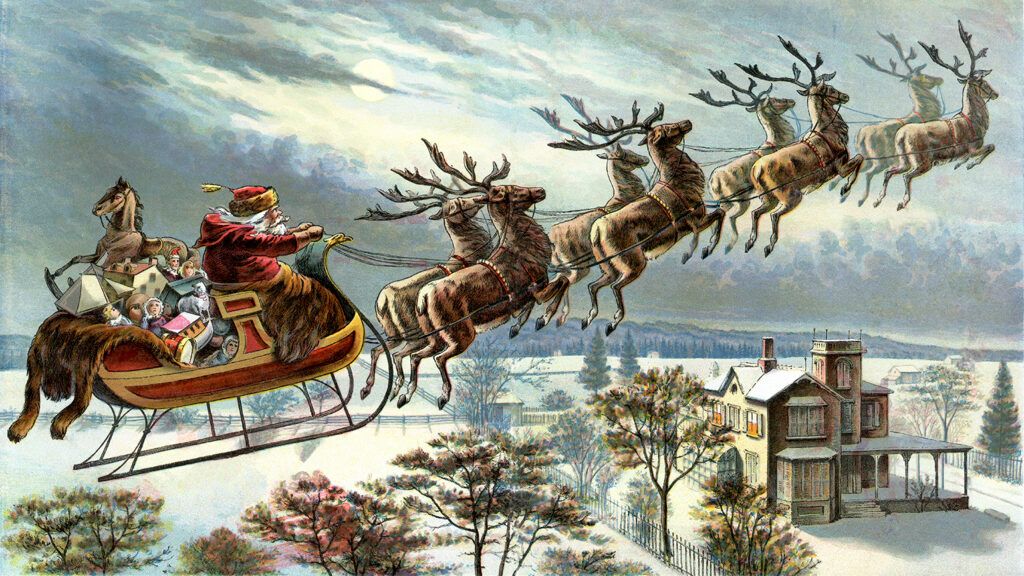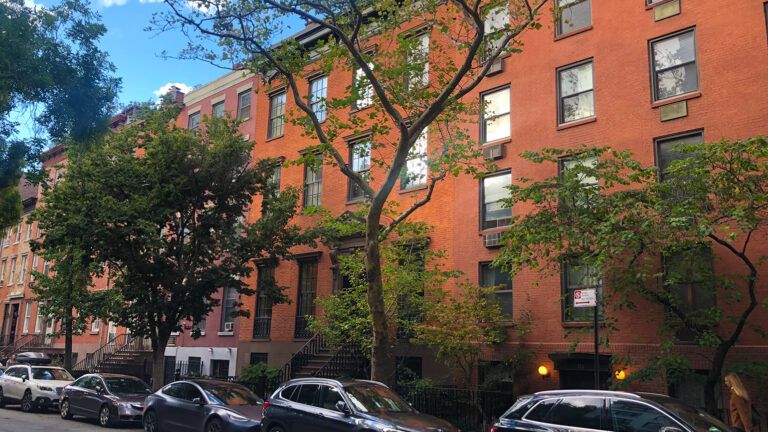On Christmas Eve some years back we were driving by Trinity Church Cemetery in upper Manhattan on our way to the midnight service, the boys in the back of the old Volvo, when we glimpsed candlelight coming through the trees. I rolled down the windows to hear singing.
“Who would be caroling in a cemetery?” my wife, Carol, asked. “And on Christmas Eve?”
“Must be someone important buried there.” There was no time to linger. We were running late. At our church Timothy slipped on his choir robe, William practiced a reading, and Carol and I headed for our usual spots in the choir loft.
The church was buzzing with energy, kids with visions of sugarplums (and Barbies and LEGOs) dancing in their heads, frazzled parents trying to remember what was still left on their to-do lists. Stockings to hang, turkeys to stuff, presents to assemble.
Still I wondered, Who would be honored on Christmas Eve in a New York City cemetery?
After we had lit our candles for “Silent Night” and the service was over, I saw our church archivist and asked, “Why would anybody be caroling tonight in Trinity Church Cemetery on West 155th Street?”
“Must be for Clement Clarke Moore,” she said. “His family plot is there.”
“Of course,” I said, feigning more knowledge than I had. Moore wrote “The Night Before Christmas”—or “A Visit from St. Nicholas,” as it was originally called— that much I knew.
But who was he and what was his connection to New York? Who was this man who has given us so many of our Christmas traditions?
After the holidays, I did some research. Moore’s life, from 1779 to 1863, encompassed an extraordinary swath of American history, from the American Revolution to the Civil War.
We like to picture the past as a slower, calmer time, but Moore had to cope with one tumultuous change after another. He was born in a New York City occupied by British soldiers. His father, Benjamin Moore, was an Anglican priest ordained in England, pledging his loyalty to the king.
But then in the war’s wake, the Church of England in America became the Episcopal Church and Benjamin Moore became one of its first bishops.
Bishop Moore seemed to know everyone. He took part in George Washington’s inauguration and was a friend of both Aaron Burr and Alexander Hamilton. When the two fought their infamous duel, the bishop was called to the wounded Hamilton’s bedside and gave the man his last rites—after lecturing him against the evils of dueling.
Clement Clarke Moore was an only child and his father his first teacher. A natural scholar, the young Moore took to Hebrew the way other boys took to climbing trees. Like his father, he attended Kings College, newly named Columbia, and graduated at the top of his class.
He became the professor of ancient languages there and looked forward to the quiet life of a landed gentleman at Chelsea House, the family farm on the island of Manhattan.
The biggest obstacle to this goal turned out to be the location of the farm, a few miles north of New York, a modest-sized city with 33,000 residents at the time of Washington’s inauguration.
No one expected it to grow as fast as it did, practically tripling in population in the following 20 years. In 1811, a state commission established an ambitious grid of streets and avenues, carving up the island into blocks.
Soon Ninth Avenue cut right through Moore’s apple and walnut orchards (he salvaged the wood for dining room chairs). It was a bit like having a freeway built in your backyard. To add insult to injury, he was assessed for a third of the cost!
Yet the street commissioners’ ambitious plans, and the city’s growth, enabled Moore to develop the old farm into the New York neighborhood that is still called Chelsea.
He built St. Peter’s, the church that stands on Twentieth Street, and gave a block of land for General Theological Seminary. He became a beloved professor on the staff, a regular at worship and an enthusiastic amateur organist; he wrote one of the first American lexicons of Hebrew.
His friendships were numerous and wide. For instance, when Lorenzo da Ponte, who created the librettos for Mozart’s greatest operas, immigrated to New York from war-torn Europe, Clement Clarke Moore became his closest friend and advocate.
Moore rescued the impoverished (and toothless) writer from a failed grocery business and got him a job teaching his native Italian at Columbia. Where else but New York would you find the librettist of Don Giovanni and The Marriage of Figaro dining with the man who wrote “not a creature was stirring, not even a mouse”?
It was in 1822 that Moore penned his now famous poem. You can picture him reading it to his children around the fire. He put himself and his wife into it (“Mamma in her kerchief and I in my cap”) along with the rambling three-story Chelsea House—where he “tore open the shutters and threw up the sash.”
He sounds like the language teacher he was with the mix of names he gave the reindeer: Dasher, Dancer, Prancer, Vixen, Comet, Cupid, Donder and Blitzen. Cupid, after all, was the Latin name of the god of love and donder and blitzen Dutch for thunder and lightning.
New York had been founded by the Dutch, and Moore was drawing on the Dutch tradition of St. Nick bringing presents to children. But that was always done on St. Nicholas Day, December 6, not Christmas Eve.
Traditions were changing, and I suspect the earnest seminary professor would have preferred a date that aligned with one of the biggest holidays of the Christian year.
The poem was written just for family, and it would have stayed that way if copies hadn’t been passed around. One landed in the hands of a newspaper editor who knew a good thing when he saw it. He published the poem anonymously and it caught on. Soon every family knew it.
In fact, as it was read aloud, children gained their expectations of what should happen on Christmas Eve. They hung their stockings by the chimney with care knowing—thanks to Moore—who would come to fill them.
They could practically hear the reindeer hooves on the roof and picture the “right jolly old elf” with the bundle of toys on his back “like a peddler just opening his pack.” In fact, it was Moore who gave Santa the white beard and sleigh that we know so well today.
Over the years others have claimed to have written the poem. Some scholars still insist that it wasn’t Moore.
But one of the last things he did was handwrite a copy and give it to the New-York Historical Society. “Clement C. Moore, 1862,” it reads in a shaky hand, “originally written many years ago.” No reason not to believe him. He also underlined the last line: “Happy Christmas to all, and to all a good night.”
Happy Christmas? That’s about the only phrase that no one has picked up from the poem. We say Merry Christmas instead. But the popularity of Santa came from this Hebrew scholar, teacher, developer, benefactor and minister’s son. No wonder people sing carols around his grave every Christmas.






